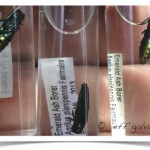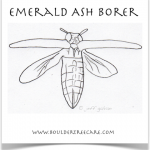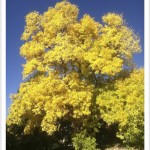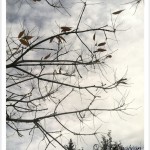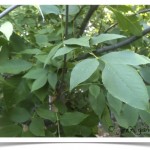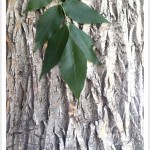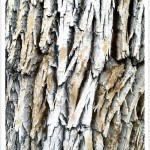Highly Destructive Tree Pest
Emerald Ash Borers, Agrilus planipennis, are small metallic-green beetles responsible for killing tens of millions of ash trees in North America. They have been *positively identified in Boulder Colorado’s ash tree population for the first time in September 2013.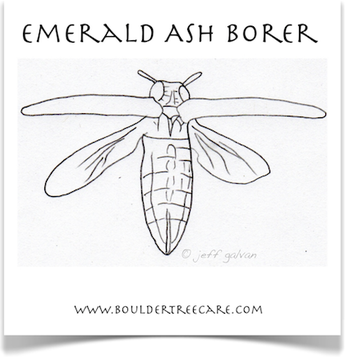
This tree insect pest is native to Asia and Eastern Russia. The first time it was discovered in the U.S. was in Wisconsin (2002). Boulder marks the furthest west location in North America that the emerald ash borers have been discovered. Colorado is the fourth state to detect this tree pest in 2013. They have now been found in a total of 22 states.
Ash trees are common in this area and with nearly 100,000 ash trees in Boulder CO. alone, the Emerald Ash Borer (EAB) is a serious threat to our urban tree population. The predominate species of ash (Fraxinus) in our area, as well as, the largest and oldest trees that line our urban streets are Fraxinus pennsylvanica – green ash.
How does the EAB kill trees?
Adult female EAB lay creamy white eggs in the crevices or layers of a tree’s bark. The eggs (approx. 1 millimeter in length) hatch in a couple of weeks and the larvae bore through the bark. Larvae feed in a serpentine pattern underneath the bark damaging the phloem and eventually girdling the tree. As a result, nutrients can no longer flow between the crown (upper portion) of the tree and the root system. An ash tree will then die from deprivation of food.
What type of trees do EAB attack?
All Fraxinus (ash tree) species are susceptible to Emerald Ash Borers.
What are the signs of an infested tree?
There are several signs when a tree is infested with EAB, including:
- Ash trees prematurely losing it’s leaves (especially in the upper crown).
- Branch and twig die back (usually in the upper crown of the tree).
- 1/8 inch holes in the bark that are shaped like the letter D.
- Larvae tunneling under the bark.
- Increased woodpecker activity as they remove the bark in search of larvae.
- Splits in the bark (vertical).
- Excessive new sprouts at base of tree.
- Tree appears to be in an overall state of decline.
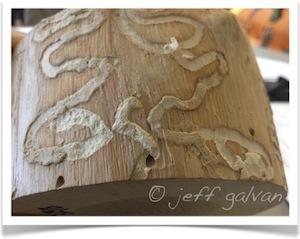 Identifying the Emerald Ash Borer
Identifying the Emerald Ash Borer
Adult EAB are small (1/2 inch long – 1/8 inch wide), metallic-green beetles that emerge from trees in mid-May (peaking in June) leaving a D shaped hole approximately 1/8 inch wide (other borer’s exit holes have larger 3/16″-1/4″ round holes). Larvae (1.5 inches long) live year-round under the bark and can be found by carefully peeling back the bark, also exposing the winding s-shaped tunneling patterns left in the wood caused by their feeding.
How long does it take for a tree to die once it starts showing symptoms?
It takes approximately 2-4 years for the EAB to kill a healthy tree and may take less time for them to destroy a tree that is already in decline. Emerald ash bores can attack both fully grown trees and saplings up to 3/4 inch in diameter.
Preventive Treatment Options
- Trunk Injections (e.g. emamectin benzoate) These systemic insecticides are injected into the trunk and are transported inside the tree more rapidly (usually 3-4 weeks) than soil applications. Note: Truck injections do cause wounds to the tree and since they need to be reapplied every 2-3 years, may cause long term health problems to the tree. Trunk injections may help minimize exposure to animals and our water supply.
- Soil Applications (Imidacloprid) – Trees uptake systemic insecticides through root system and transport throughout the rest of the tree. Reapplied yearly.
- Systemic Basal Trunk Sprays (Dinotefuran) – Applied to the bottom 7 feet of trunk. Insecticide systemically moves through tree after it permeates the bark. Application of trunk sprays are recommended every year.
- Cover spray treatments (permethrin, bifenthrin, cyfluthrin, and carbaryl) which can be applied to the either the bark or crown of the tree. Cover spray is applied to leaves, branches and trunk; killing mature EAB emerging from the tree (base temperature of 50 degrees F) and feeding on foliage (as well as any other insect to feed on the leaves). Cover sprays do not affect the larvae beneath the bark.
When do EAB treatments take place?
- Trunk injection are applied in mid-May to mid-June; after the tree’s leaves have filled out and before the EAB eggs have hatched. Kills Larvae and mature EAB feeding on foliage, as well as, other insects feeding on the leaves (takes approx. 3-4 weeks to move throughout tree).
- Soil Applications – mid-April mid-May (takes approx. 4-6 weeks to move throughout tree)
- Cover spray is applied when adults emerge from tree. Generally, when the base temperature reaches 50 degrees Fahrenheit.
How Much Does EAB Treatment Cost?
Insecticide doses are based on the diameter (D) of the tree being treated. Here’s how to find the diameter for your tree using a standard tape measure:
- Set the tape measure 4.5 feet above ground.
- Walk or reach the tape measure around the tree to find the circumference (C).
- Divide that measurement by 3.14 (D= C / 3.14)
Example: A measurement of 56” inches would be a 18” diameter tree (56” divided by 3.14 is 17.834” is rounded up to 18”). The size of trees and the number of trees to be treated affect the overall cost of treatment. The cost of treatment for an individual tree depends on the services provided and there may be reduced cost for treating more trees on in the same property. The cost of a 2 year preventive treatment using trunk injections (preferred application method) for this tree would be based on an 18″ diameter tree @ $the cost of local providers per dbh.
Boulder Tree Care currently does not provide Emerald Ash Borer Treatment for ash trees in Boulder, Colorado. We simply have too many concerns about these toxic insecticides and the long term affects when it comes to the environment, our clients, and, the potential exposure to our tree working crews.
How do I help prevent the rapid spread the Emerald Ash Borer?
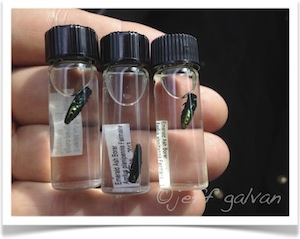 Do NOT move ash tree wood or any hardwood that has been cut for use as firewood out of the Boulder County (quarantine area). Since larvae survive underneath the bark in firewood, it is important to not transport firewood and spread the destructive pest to uninfected areas. Branches and brush must be chipped to 1″x1″ or smaller to be considered safe to move out of quarantined areas unless in meets the Approved Treatments For Handling Regulated Ash Materials (see below).
Do NOT move ash tree wood or any hardwood that has been cut for use as firewood out of the Boulder County (quarantine area). Since larvae survive underneath the bark in firewood, it is important to not transport firewood and spread the destructive pest to uninfected areas. Branches and brush must be chipped to 1″x1″ or smaller to be considered safe to move out of quarantined areas unless in meets the Approved Treatments For Handling Regulated Ash Materials (see below).
All ash trees and other local hardwoods are quarantined beginning November 12, 2013. This means no removal of any ash tree (including living tree nursery stock) logs, branches, brush or wood chips larger than 1″ (in two dimensions) may be taken outside of Boulder County.
Where to take ash tree wood that has been infested with EAB?
Currently, there is no facility or wood yard set up by Boulder County to dispose of ash trees infested with Emerald Ash Borers. It is up to homeowners and tree care companies to find places within Boulder County to dispose of ash trees removed from private residents. Remember: No ash trees alive or dead will be able to leave Boulder county once the quarantine is in effect (Tuesday, November 12th 2013).
The Colorado Department of Agriculture has provided detail instructions for Approved Treatments For Handling Regulated Ash Materials Including:
- Composting
- Mulch Sampling Protocol
- Kiln Sterilization Treatment Schedule
- Heat Treatment Schedule
What else can we do?
Cultivating healthy trees by implementing good plant health care techniques is often helpful when it comes to the prevention of pest insects and diseases. NOTE: Emerald Ash Borers are aggressive tree pest and these tiny insects are capable of killing healthy, vigorous trees.
Here are a few things we can do to help track and slow the spread of EAB:
- Monitoring and early detection of areas infested with Emerald Ash Borers.
- Quarantine of infected areas.
- Choosing tree service companies that understand the importance (and have a wood disposal yard within Boulder County) of not moving ash wood, branches brush or large wood chips from quarantined areas.
- Do not move any living or dead ash tree wood outside of Boulder County.
Does the Cold Weather Kill EAB?
It depends on how low the temperatures get and how long it last. While the cold weather may have an impact on how rapidly the EAB will spread, it seems unlikely that it will have any long term affect on the overall Emerald Ash Borer situation (well, maybe another ice age would). While temperatures of 0 degrees may kill up to 5 percent of the population of EAB, we would need to see the temperatures plummet below -30 to kill upwards of 90-95 percent of the Emerald Ash Borer population.
Where were they found in Boulder?
The original Boulder location where EAB were discovered is not being released. The infected trees were found on private land and local officials want to help prevent too many people from visiting their property. The general area is in N. Boulder around 30th and Iris. There are approximately 300 ash trees within a 1/2 mile of this location (the approximate distance an Emerald Ash Borer can travel on its own).
In December 2013 an additional EAB infestation was found on the campus of The University of Colorado Boulder. CU removed the 16 ash trees soon after having discovered that the emerald ash borers were present.
Who do I contact if I suspect my tree may be infested with EAB?
Contact a local ISA Certified Arborist and ask them to diagnosis your tree to determine if it has Emerald Ash Borers when you see the signs of a possible infestation.
*The Colorado Department of Agriculture Systematic Entomology Laboratory has released that they have identified this tree pest after samples were sent from a tree in Boulder County that appeared to be infected.
Diagnosis of Tree Related Illnesses and Diseases
- Emerald Ash Borer
- Ash, Green
- Ash, Green ~ Twigs
- Ash, Green – Leaves
- Ash, Green ~ Leaf
- Ash, Green ~ Bark


